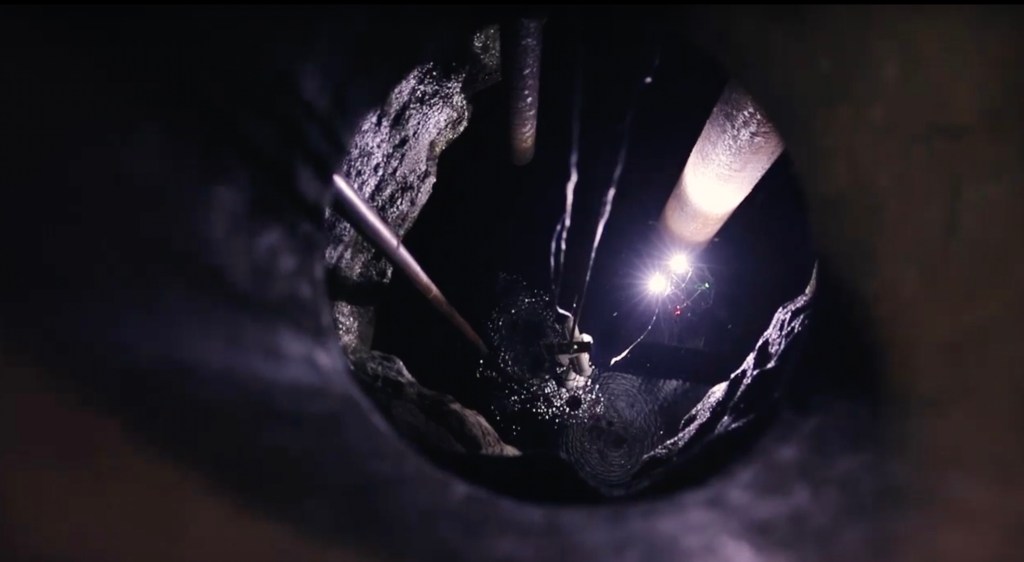
Water services companies that dominate the sector in France face a dilemma. A recent law requires all major cities to inspect their wastewater infrastructure by 2026, creating a crushing demand for operators of those thousands of kilometers of sewer networks to get the work done in time. In order to meet that challenge, sector giant Suez has turned to drones.
This week Suez tech experts were in the Loire Valley city of Orléans to school local authorities and residents on how the company is using drones to perform inspection and diagnostics of the municipal sewer system. The main company vehicle for the work is a cage-anchored Flyability Elios 2, which is flown with tethers to facilitate video and other data flows back to the pilot and monitoring computers. Deployment of the UAV not only spares human inspectors from having to wriggle into cramped, slippery, possibly dangerous, and generally yucky sewer spaces in surveying their condition. It also considerably speeds up their progress as the legal clock ticks for the work to be completed.
Consider la Ville Rose (aka Toulouse). France’s fourth-largest city has 2,229 miles of underground sewer pipes and conduits that need eyeballing within five years. Manual inspections, as well as lower-tech innovations like rolling cameras through infrastructure on small carts, or floating them on mini-rafts, advanced that effort at a slogging pace. When municipal officials heard about the Suez drone option, they signed up in a flash. Those in Orléans followed suit, and UAVs quickly began flying their underground rounds.
That aerial subterranean approach may not provide the miracle of sewer audits overnight, but it has sped the pace.

Suez personnel using traditional methods can inspect between 1,312 to 1,968 feet of wastewater network per day. An Elios 2 ups that daily rate to 2,952 feet, which – depending on the site – can represent speed enhancements from 50% to 100% each shift. Faster work in less time, of course, also means lower costs.
In some situations, the drone is the only real solution possible. Only about 80% of the wastewater systems that Suez manages can be inspected using traditional methods, with much of the remaining, pinched spaces now the responsibility of scrutinizing drones.
Even in more accessible conduits, meanwhile, UAVs have proven effective in identifying accumulated rocks, mud, or silt creating clogs; assessing the functionality of networks; and exposing potential structural problems like root intrusion that could cause masonry to collapse, provoking the failure of the sewer system.
Piloting the craft in a cage not only protects the Elios 2 during bumps or harder collisions with surrounding structures. It’s also a safeguard against damaging parts of the underground systems still made of decades-, possibly century-old stone blocks whose continued aging in corrosive conditions is a focus of inspections in the first place.
Back in Orléans, the improved progress of drone-led inspections of designated parts of the sewer network haven’t been magical, but have put previous methods to shame.
“We inspect 1% in a week,” Alexandre Ventura, Suez’s head of inspection technology innovation told the République du Centre about work in the company’s section of Orléans’ wider 400 kilometer sewer system. “Normally, we do 1% in a year.”
FTC: We use income earning auto affiliate links. More.



Comments